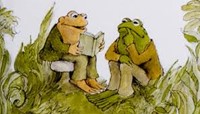SOUND OUT
When I come to a word I do not know, I should use my knowledge of letter sound relationships to try to figure out the unknown word.
CHUNK
When I come to an unknown word, I should try to break it into smaller pieces and then work on blending the sounds together to try to figure it out.
USE CONTEXT CLUES
I should use clues from the words I just read to help me figure out unknown words.
SKIP AND GO BACK
I should try to figure out unknown words by skipping the word and reading ahead to gain context, then go back and figure out the unknown word.
PREDICT
I should use what I know to make an educated guess about what is going to happen.
QUESTION
I should ask myself questions before, during and after reading to maintain and build comprehension (Does this make sense? Use the 5 W’s, who, what, where, when and why.).
SELF-CORRECT
I should recognize an error or mistake in my reading and go back to correct it (this is a sign that I understand what I am reading).
REREAD
I should reread if something did not make sense.
VISUALIZE
I should create a picture in my mind from the words that I am reading to help build understanding.
MAKE CONNECTIONS
I should connect new information to my prior knowledge in order to develop and deepen comprehension.
INFER
I should draw conclusions using information from the text along with prior knowledge.
SUMMARIZE
I should be able to rethink the key ideas and details from a text.
GOOD Reader Habits

